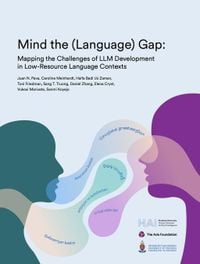The Hong Kong University of Science and Technology (HKUST) has taken a major step in advancing the use of artificial intelligence in education by becoming the first local university to deploy Hong Kong’s first domestically developed large language model (LLM). Known as HKGAI V1, the model was developed by the Hong Kong Generative AI Research and Development Center (HKGAI) and is now freely accessible to HKUST staff and students. This deployment represents a key milestone in the city’s AI landscape, introducing a locally refined model tailored to the cultural and linguistic needs of Hong Kong.
HKGAI V1 was created under the InnoHK initiative, a government-funded research programme promoting innovation through collaboration between academia and industry. Led by HKUST and involving multiple universities, the HKGAI Centre developed this LLM using full-parameter fine-tuning of the DeepSeek architecture. This approach allows for enhanced performance in specific contexts, particularly in linguistic environments requiring nuanced handling of Cantonese, Putonghua, and English—languages essential to communication in Hong Kong.
Unlike many general-purpose international LLMs, HKGAI V1 is optimised for local usage, making it better suited for applications in education, public services, and research that demand cultural sensitivity and contextual accuracy. The model supports multilingual interactions, enabling it to effectively address the needs of Hong Kong’s diverse academic and administrative communities. It incorporates safety mechanisms to ensure responsible use, including content moderation and response filtering aligned with educational standards.
As part of a pilot programme, HKGAI V1 is now integrated into the academic environment at HKUST. The model is being used in classrooms to support a variety of learning objectives. For instance, it facilitates classroom discussions by generating prompts, summarising key points, and encouraging deeper reasoning. It also serves as a companion for collaborative learning, assisting students in problem-solving, project development, and academic writing. In addition, it functions as an analytical tool, helping learners break down complex concepts and engage in reflective exercises.
This move positions HKUST as a regional leader in educational technology. The university has expanded its GenAI Platform, which now hosts over ten powerful generative AI tools. These include globally recognised models such as GPT-4, visual content generators like DALL·E, and additional LLMs like DeepSeek-R1. Together, these tools offer a one-stop platform for tasks ranging from text generation and image analysis to data-driven insights and logical reasoning. The inclusion of HKGAI V1 enriches this suite by adding a homegrown model specifically calibrated for local applications.
To facilitate adoption and ensure effective use, HKUST’s Centre for Education Innovation is providing professional development and technical support for faculty. Training workshops focus on integrating AI into course design, using LLMs for formative assessment, and encouraging active learning through AI-enhanced interaction. By equipping educators with the skills to use generative AI meaningfully, the university is fostering a learning environment that is more dynamic, inclusive, and adaptive.
The long-term implications of introducing a locally developed LLM go beyond classroom utility. HKGAI V1 offers a foundation for further AI research, allowing scholars to experiment with customised models and contribute to the ongoing evolution of generative AI technologies. It also sets a precedent for the development of ethical, culturally aligned AI systems in Asia, responding to growing concerns about the global dominance of non-localised AI platforms.
With this launch, HKUST demonstrates a forward-looking approach to AI integration, prioritising both innovation and contextual relevance. By aligning technological advancement with educational objectives, the university is shaping a future where AI tools enhance not only efficiency but also the quality and inclusivity of learning. As Hong Kong continues to invest in digital innovation, HKGAI V1 is likely to serve as a model for how locally developed technologies can empower education, research, and public engagement.
In parallel, on the same date, researchers from MIT, McGill University, ETH Zurich, Johns Hopkins University, Yale, and the Mila-Quebec Artificial Intelligence Institute unveiled a new method aimed at enhancing the accuracy and usefulness of AI-generated codes. This method spans various programming languages and instructs large language models (LLMs) to adhere to the specific rules of each language.
Utilising Sequential Monte Carlo (SMC) techniques, the researchers tackled challenging semantic parsing problems, guiding the generation of code with both static and dynamic analysis. According to João Loula, co-lead writer of the paper, this method could significantly improve programming assistants, AI-powered data analysis, and scientific discovery tools. It promises to be more efficient and cost-effective than previous reranking methods.
AI-generated code has proven powerful but often leads to outputs that disregard the semantic rules of programming languages. The new method addresses this issue by discarding non-compliant code outputs early in the generation process, allowing for a more focused approach on outputs likely to be valid and accurate.
The researchers reported successful experiments using the Llama 3 models for various tasks, including Python code generation for data science, text-to-SQL generation, and molecular synthesis for drug discovery. They found that adapting SMC significantly improved the performance of small language models, enhancing their accuracy and robustness compared to larger models.
The implications of these advancements are profound, as they address concerns over code quality and the efficiency of AI-powered coding. Other companies have also been exploring ways to improve AI-generated code, with Together AI and Agentica releasing DeepCoder-14B and Google enhancing its Code Assist feature.
As these developments unfold, they underscore a critical moment in the intersection of AI and education, where local innovations like HKGAI V1 and advancements in AI coding technologies could reshape the landscape of learning and development in Hong Kong and beyond.







